How to Choose the Best SharePoint Asset Management System for your Business?
Effective asset management is crucial for businesses to optimize resources, streamline operations, and enhance productivity In this article, you can explore key factors which will guide you in selecting the best SharePoint asset management system for your organization.
What is SharePoint asset management software?
In a SharePoint asset management software you can create custom lists to store information about assets, use document libraries to manage related documentation, set up workflows to automate approval processes, and utilize metadata for categorization and search capabilities.
Understanding Your Business Requirements
Before diving into the sea of available SharePoint asset management solutions, it’s imperative to understand the unique requirements of your business.
Conduct a thorough assessment of your assets, considering both physical and digital components. Identify the key features and functionalities that will align with your business processes and goals. Questions to ask include:
1. What types of assets do you need to manage?
Determine whether your assets are predominantly physical (e.g., equipment, machinery) or digital (e.g., documents, files).
2. How complex are your asset management processes?
Assess the complexity of your workflows, approvals, and collaboration requirements related to asset management.
3. Do you require integration with other systems?
Consider whether your asset management system needs to integrate with other business applications such as finance or maintenance tracking.
4. What level of customization is essential?
Identify the degree of customization needed to tailor the asset management system to your specific business processes.
Key Features of SharePoint Asset Management Software:
Evaluating Integration with SharePoint
One of the primary advantages of using SharePoint for asset management system is its seamless integration with the Microsoft ecosystem. Ensure that the asset management system you choose maximizes this integration. Look for features such as:
1. Smooth Collaboration:
Assess how well the system promotes collaboration among team members, leveraging SharePoint’s document management and collaboration capabilities.
2. Document Libraries:
Verify the system’s ability to effectively utilize SharePoint document libraries for managing digital assets associated with physical assets.
Assessing Customization and Flexibility
Each business has its own set of asset management needs, and a one-size-fits-all solution might not suffice. A robust asset management system on SharePoint should offer:
1. Custom Lists and Metadata:
Ensure the system allows you to create custom lists with relevant fields and metadata to capture specific details about each asset.
2. Workflow Customization:
Check the level of customization available for workflows to automate processes such as asset requests, approvals, and notifications.
3.User Interface Customization:
Evaluate whether the user interface can be customized to match your organization’s preferences and branding, contributing to a more user-friendly experience.
Prioritizing User-Friendly Interface
An intuitive and user-friendly interface is crucial for the successful adoption of any asset management system Consider:
1.Ease of Navigation: Test the system’s navigation and assess how easily users can access and manage asset information.
2.Training Requirements: Determine the level of training required for users to become proficient in using the asset management system.
Comprehensive Asset Tracking
An effective asset management system should provide comprehensive tracking capabilities for both physical and digital assets. Key features include:
1. Barcode/QR Code Scanning:
If applicable, check whether the system supports barcode or QR code scanning for efficient tracking of physical assets.
2. Version Control:
Ensure that the system incorporates version control for tracking changes to documents and asset records.
3. Location Management:
Evaluate features related to tracking the physical location of assets, especially if your organization operates across multiple sites.
Automation and Workflow Capabilities
Automation streamlines processes, reduces errors, and improves overall efficiency. Look for:
1. Approval Workflows:
Assess the system’s ability to automate approval processes related to asset requests, changes, or maintenance.
2. Notification Systems:
Check if the system provides automated notifications to relevant stakeholders for important events or updates.
Reporting and Analytics Tools
To make informed decisions, your asset management system should offer robust reporting and analytics capabilities, including:
1. Custom Report Generation:
Evaluate the system’s ability to generate custom reports based on key performance indicators relevant to your asset management system objectives.
2. Dashboard Creation:
Assess the ease with which dashboards can be created to provide at-a-glance insights into asset performance and utilization.
Security and Permissions
Protecting sensitive asset information is paramount. Ensure that the system provides:
1. Role-Based Access Control:
Implement role-based access control to restrict access to specific sections of the asset management system based on user roles.
2. Data Encryption:
Verify that the system employs robust data encryption mechanisms to safeguard confidential asset data.
Mobile Accessibility
In an increasingly mobile-centric business environment, the asset management system should be accessible from various devices. Consider:
1. Cross-Platform Compatibility:
Check whether the system is compatible with a range of devices and operating systems to ensure accessibility from smartphones and tablets.
2.Mobile App Availability:
Assess whether the system offers a dedicated mobile app or a responsive web interface for on-the-go asset management.
Scalability
Choose an asset management system that can grow with your business. Consider:
1. Capacity for Growth:
Ensure that the system can handle an increasing volume of assets, users, and data as your business expands.
2. Scalability of Features:
Assess whether additional features and functionalities can be easily integrated as your asset management needs evolve.
Vendor Support and Updates
A reliable vendor can significantly impact your experience with our asset management system. Consider:
1. Vendor Reputation:
Research the reputation of the vendor providing the asset management system, including reviews, testimonials, and case studies from other businesses.
2. Support and Maintenance:
Verify the level of support and maintenance provided by the vendor, including response times, update frequency, and ongoing compatibility with the latest SharePoint versions.
Why Asset Management 365 is Best SharePoint asset management System for Your Business?
- Asset Management 365 seamlessly integrates with Microsoft SharePoint, enhancing its efficiency.
- The system offers exceptional customization and flexibility tailored to specific asset management processes.
- Provides a user-friendly interface, reducing the need for extensive training.
- Excels in asset tracking with features like barcode scanning and version control.
- Streamlines approval processes and ensures efficiency through automation.
- Prioritizes security with role-based access control and data encryption.
- Ensures accessibility on mobile devices for on-the-go management.
- The system is scalable to meet the evolving needs of businesses.
- Backed by ongoing support from a reputable vendor.
- While SharePoint integration is a strength, organizations should assess specific needs before choosing an asset management solution. Our Dedicated software offer specialized features.
Conclusion
Selecting the ultimate SharePoint asset management system requires a deep understanding of business needs, feature consideration, and a focus on security. Head to HR365 for top-notch Asset tracking solutions, along with Power Apps, Microsoft Teams Apps, and SharePoint Apps. Our ready-to-deploy solutions cover a range of HR needs. Book a demo at HR365.US to experience the future of efficient asset management processes.
About HR365
HR365 leads and serves the industry in application development with focus on Power Apps, Microsoft Teams Apps, SharePoint Apps, Intranet branding, legacy app migration, and has out of box ready to deploy such as Employee Directory 365, Employee Onboarding 365, Helpdesk 365, Contract Management 365, Asset Management 365, Performance Management 365, Timesheet 365, Expense Tracker 365, Time Off Manager 365, and Custom Application. HR365 can help you in Integrate SharePoint Web Part in MS Teams in case you need any assistance.

Schedule a free personalized 1:1 demo
By proceeding, you accept Cubic Logics’s terms and conditions and privacy policy






Start Your Free Experience
By proceeding, you accept Cubic Logics’s terms and conditions and privacy policy






Start Your Free Experience
By proceeding, you accept Cubic Logics’s terms and conditions and privacy policy







